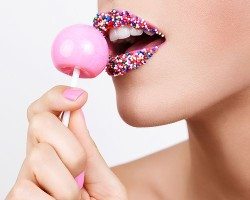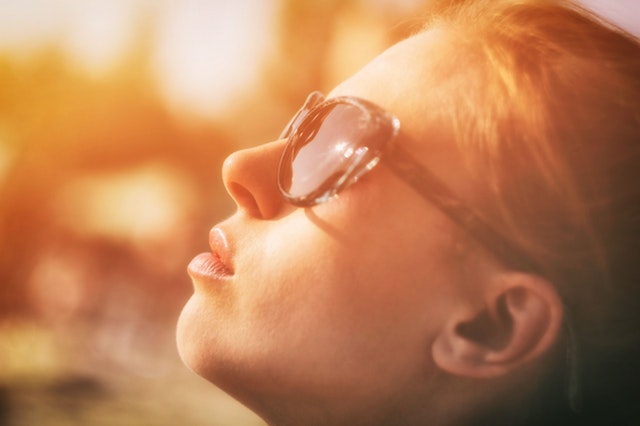My plant-based diet journey began two years ago, after visiting multiple dermatologists about my worsening acne and finding no real solution. I tried downplaying how I felt about the situation, saying things like, “It’s not a huge deal. It’s just my skin.” As it turned out, I was dealing with a deeper issue. Gradually I’ve discovered that my skin is a reflection of my inner health. The fact that my face was always broken out indicated that something was out of balance and needed to be addressed. Besides, even if acne was “just my skin,” it certainly impacted my sense of self. Despite following a strict skin care regimen, I felt that I was somehow “less clean” than my smooth-faced friends. Although I’ve learned a lot about how to take care of my skin, and in the process came to embrace veganism, I do not pretend to fully understand the workings of my skin. I do know, however, that if something like acne continually affects the way you feel about yourself, it is more than “skin deep.”
Although some of my doctors told me that there was no connection between food and breakouts, I couldn’t ignore the feeling that eating differently would change things. After leaning about the connection between dairy and acne, I eliminated dairy from my diet. This helped somewhat, but I was still having difficulty with my skin. After doing more research, I learned that excess dietary sugar causes insulin resistance, which, in turn, can cause a host of hormonal problems, including acne. Women’s nutrition expert Colette Harris explains that insulin resistance is akin to the body’s cells being “hard of hearing to insulin’s message.” As a result, the body “turns up the volume” by producing more insulin for a given amount of blood glucose. These high levels of insulin stimulate the ovaries to produce excess androgens (male hormones). Androgens then prompt sebaceous glands to produce more sebum (the natural oil produced by skin), too much of which clogs the pores. Consistently eating meals with a high glycemic load—meals that cause a rapid rise in blood sugar—will exacerbate this problem. (For more information on glycemic index and load, click here).
With this information, I began to understand that my ever-present sugar sensitivity was related to what was happening on my face. Like my parents, I’ve always been hypoglycemic, meaning that I tend to have low blood sugar due to excessive insulin production. Symptoms of hypoglycemia include shakiness, feelings of hunger shortly after a meal, and caffeine- and alcohol-sensitivity. Thanks to my parents, I’d learned to eat high-fiber, whole grains that “stay with you,” as my dad says, and help me avoid getting shaky between meals. I’m also very careful about coffee, as much I do love some Jo.
What I still didn’t understand, however, was why not even this careful dieting completely freed me from what seemed to be sugar-related acne. Like eliminating dairy, avoiding processed grains and sugar are only part of the picture. In my ongoing search for answers, I often come across well-meaning diet advice telling me that if I just stopped “abusing” refined sugars, my insulin resistance problem would be solved. Our bodies are so unique and complex, however; one simple solution may not solve all with everyone.
Another thing I’ve learned is that if you’re looking to address you diet, your skin regimen etc., customization is key. Now, I not only avoid refined foods, I also watch my portion size of low glycemic grains since glycemic load increases with portion size. I’m also more careful about the type and amount of fruit I consume. I still eat fruit every day, but I usually opt for fruits lower in sugar like apples and berries. That being said, I do not eat perfectly all the time! (For one, I’m still learning ways to improve my diet.) Also, I don’t want my food concerns to prevent me from enjoying a meal, especially when I’m traveling and visiting with friends. Occasionally, I’m faced with the choice of eating something low-glycemic and non-vegan (like scrambled eggs) or high-glycemic and vegan (like white toast or instant oatmeal). I try not to let these situations stress me out since most of the time I do okay. Topically speaking, I’ve switched to gentle, non-abrasive products since I’ve learned that no amount of harsh products (all-natural or not) will fix the root problem. (More about gentle skin products for acne in an upcoming post!) With watching portion sizes, fruit, and switching to gentler products, I’ve made great progress in finding the right formula for clear skin that fits me. My skin tone is far more even now–no more angry red areas! I feel less compelled to wear makeup just to leave the house these days, which is a wonderful feeling. (Don’t get me wrong–I love makeup–just not when it’s a mask). When I do get the occasional spot, it’s never as bad as those I used to get, and it tends to heal up within a few days. Much to my relief, I haven’t had any cystic acne (the big, deep, painful kind) in over a year.
If you are past your teenage years and still struggling with acne, look at the sources and amount of sugar in your diet. Also, be careful about coffee, tea, and alcohol, since although forms of these may not necessarily taste sweet, they can definitely mess with your blood sugar. More generally speaking, whether you’re battling breakouts or simply looking to improve your health, customize your approach to your unique, wonderful, whole self. The best solutions are often multi-faceted. Do lots of reading, but also allow your intuition to guide you.
More in Beauty: Hydrating DIY Banana Clay Face Mask
___
Photo: Devin Dygert on Flickr





